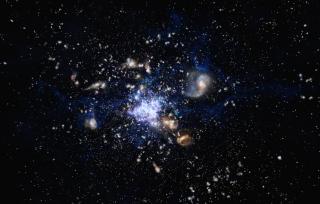Bibcode
Muir, J.; Baxter, E.; Miranda, V.; Doux, C.; Ferté, A.; Leonard, C. D.; Huterer, D.; Jain, B.; Lemos, P.; Raveri, M.; Nadathur, S.; Campos, A.; Chen, A.; Dodelson, S.; Elvin-Poole, J.; Lee, S.; Secco, L. F.; Troxel, M. A.; Weaverdyck, N.; Zuntz, J.; Brout, D.; Choi, A.; Crocce, M.; Davis, T. M.; Gruen, D.; Krause, E.; Lidman, C.; MacCrann, N.; Möller, A.; Prat, J.; Ross, A. J.; Sako, M.; Samuroff, S.; Sánchez, C.; Scolnic, D.; Zhang, B.; Abbott, T. M. C.; Aguena, M.; Allam, S.; Annis, J.; Avila, S.; Bacon, D.; Bertin, E.; Bhargava, S.; Bridle, S. L.; Brooks, D.; Burke, D. L.; Carnero Rosell, A.; Carrasco Kind, M.; Carretero, J.; Cawthon, R.; Costanzi, M.; da Costa, L. N.; Pereira, M. E. S.; Desai, S.; Diehl, H. T.; Dietrich, J. P.; Doel, P.; Estrada, J.; Everett, S.; Evrard, A. E.; Ferrero, I.; Flaugher, B.; Frieman, J.; García-Bellido, J.; Giannantonio, T.; Gruendl, R. A.; Gschwend, J.; Gutierrez, G.; Hinton, S. R.; Hollowood, D. L.; Honscheid, K.; Hoyle, B.; James, D. J.; Jeltema, T.; Kuehn, K.; Kuropatkin, N.; Lahav, O.; Lima, M.; Maia, M. A. G.; Menanteau, F.; Miquel, R.; Morgan, R.; Myles, J.; Palmese, A.; Paz-Chinchón, F.; Plazas, A. A.; Romer, A. K.; Roodman, A.; Sanchez, E.; Scarpine, V.; Serrano, S.; Sevilla-Noarbe, I.; Smith, M.; Suchyta, E.; Swanson, M. E. C.; Tarle, G.; Thomas, D.; To, C.; Tucker, D. L. et al.
Bibliographical reference
Physical Review D
Advertised on:
1
2021
Journal
Citations
27
Refereed citations
24
Description
We analyze Dark Energy Survey (DES) data to constrain a cosmological model where a subset of parameters—focusing on Ωm—are split into versions associated with structure growth (e.g., Ωmgrow) and expansion history (e.g., Ωmgeo). Once the parameters have been specified for the Λ CDM cosmological model, which includes general relativity as a theory of gravity, it uniquely predicts the evolution of both geometry (distances) and the growth of structure over cosmic time. Any inconsistency between measurements of geometry and growth could therefore indicate a breakdown of that model. Our growth-geometry split approach therefore serves both as a (largely) model-independent test for beyond-Λ CDM physics, and as a means to characterize how DES observables provide cosmological information. We analyze the same multiprobe DES data as [Phys. Rev. Lett. 122, 171301 (2019), 10.1103/PhysRevLett.122.171301] : DES Year 1 (Y1) galaxy clustering and weak lensing, which are sensitive to both growth and geometry, as well as Y1 BAO and Y3 supernovae, which probe geometry. We additionally include external geometric information from BOSS DR12 BAO and a compressed Planck 2015 likelihood, and external growth information from BOSS DR12 RSD. We find no significant disagreement with Ωmgrow=Ωmgeo. When DES and external data are analyzed separately, degeneracies with neutrino mass and intrinsic alignments limit our ability to measure Ωmgrow, but combining DES with external data allows us to constrain both growth and geometric quantities. We also consider a parametrization where we split both Ωm and w , but find that even our most constraining data combination is unable to separately constrain Ωmgrow and wgrow. Relative to Λ CDM , splitting growth and geometry weakens bounds on σ8 but does not alter constraints on h .
Related projects

Molecular Gas and Dust in Galaxies Across Cosmic Time
Two of the most fundamental questions in astrophysics are the conversion of molecular gas into stars and how this physical process is a function of environments on all scales, ranging from planetary systems, stellar clusters, galaxies to galaxy clusters. The main goal of this internal project is to get insight into the formation and evolution of
Helmut
Dannerbauer